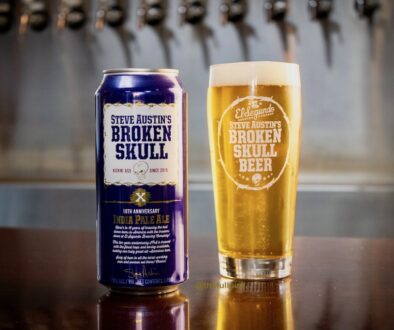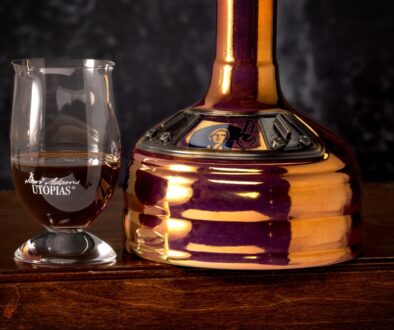Is American beer any good?
 The idea of weak American suds is being laid to rest by the boom in indie ales, stouts and pilsners
The idea of weak American suds is being laid to rest by the boom in indie ales, stouts and pilsners
Ask most people where the best beer in the world comes from, and they’ll probably say Germany or England. More worldly folks might mention Belgium.
But ask a beer aficionado these days, and odds are you’ll get an answer that might surprise you – the good old U.S.A.
Just as wines from Napa Valley, Sonoma County and Oregon are giving bordeaux, burgundy and barolo a run for their money, breweries from California to New York are proving they can make some of the best suds in the world. And they’re not just copies of the old European originals. While American craft brewers have proven themselves no slouches at styles such as pilsners, pale ales and stouts, they’ve also created some of their own, often bold styles.
“U.S. craft beer is probably the most diverse and interesting brewing scene in the world,” beer aficionado Cass Enright said at a recent dinner in Toronto at the Academy of Spherical Arts to celebrate the Ontario launch of Southern Tier Brewing’s India Pale Ale.
Over the past few decades, the U.S. beer scene has exploded. In 1978, there were just 42 breweries across the U.S. In 2007, there were 1,449.
“You can find just about anything being made. They’ve taken the best of every kind of style and put their own twist on it,” says Enright, founder of bartowel.com, a site for local beer connoisseurs.
At Bar Volo the next night, Southern Tier founder Phin De Mink and his brewer, Paul Cain, were mobbed by local beer fans.
“We were shocked,” says De Mink, whose five-year-old brewery is about an hour’s drive south of Buffalo.
“When we started shipping our beer up here, it was just for small private orders. We didn’t really think that many people even knew what Southern Tier was.”
At both Toronto events, De Mink was peppered with questions about when more products – including the highly respected Choklat imperial stout – will be available north of the border. (Answer: Choklat will be sold through private import agent Roland and Russell, rolandandrussell.com, in November.)
It’s not just beer enthusiasts who are falling in love with American brews. Toronto-area restaurants and bars are stocking an increasing number of beers from south of the 49th parallel. At Volo, owner Ralph Morana has 29. Beerbistro, which recently increased its cellar space, offers about 50 American beers.
Among the U.S. beers available at Beerbistro are the so-called double IPAs or imperial India pale ales. They’re a bolder, hoppier American take on a classic English beer designed to withstand the long boat voyages to the subcontinent. Dogfish Head, whose 60-Minute IPA is coming to the LCBO later this summer, has two hoppier versions called 90-Minute and 120-Minute. Both are selling well at Beerbistro.
But the super-hoppy beer trend has its detractors, even among some American brewers. “Can you imagine a chef saying, `This is the saltiest stew you’ve ever tried, and you’re not a real man if you don’t like it?’ That’s what some of these breweries are doing,” says Garrett Oliver, brewmaster of the Brooklyn Brewery in New York.
Oliver, whose flagship Brooklyn Lager has been available at the LCBO since last year, makes an IPA more in keeping with the original English style. He also brews a bottle-conditioned Belgian ale, which will be on sale at the LCBO some time in the next year. Brooklyn’s Black Chocolate Stout, a rich, strong imperial stout, will be part of the LCBO’s seasonal program this winter.
While the bolder beers are some of the more popular American brews on offer at Beerbistro, they’re not the only ones people ask for.
“The Americans are hop-heads, but there’s a lot more variety than just IPAs,” says Morin, pointing to Dogfish Head’s Chateau Jiahu, a delicate brew that includes rice, honey and hawthorn berries.
Even the LCBO is starting to surf the American wave. It recently added four beers – Southern Tier IPA, Dogfish Head 60-Minute IPA, Rogue Dead Guy Ale and Anchor Steam Beer – to the general list. Several more have been added on a seasonal basis.
“Our overall plan is to continue to focus on ultra-premium products, and craft beer – from Ontario and elsewhere – definitely falls in that category,” says Leanne Rhee, the LCBO’s category manager for beer.
Still, craft beer fans shouldn’t expect to see beer from smaller but highly touted U.S. brewers, such as Wisconsin’s New Glarus, or Indiana brewery Three Floyds, renowned for its Dark Lord imperial stout. Many are still building a following in their home markets, says Rhee.
Another obstacle for some breweries is the LCBO’s regulations, including specific requirements for labels, packaging and rigorous testing at the LCBO’s lab.
Smaller breweries, such as Buffalo’s Flying Bison, don’t have the technical or financial ability to change their packaging.
“It really doesn’t make any sense for me to do it. It’s not worth it,” says Flying Bison brewer Tim Herzog.
Despite the new additions, Rhee admits the LCBO’s stock doesn’t go far enough. “We’d definitely like to have more American beer. Our customers are asking for it.”
Source: thestar.com
Josh Rubin
Beer Reporter




